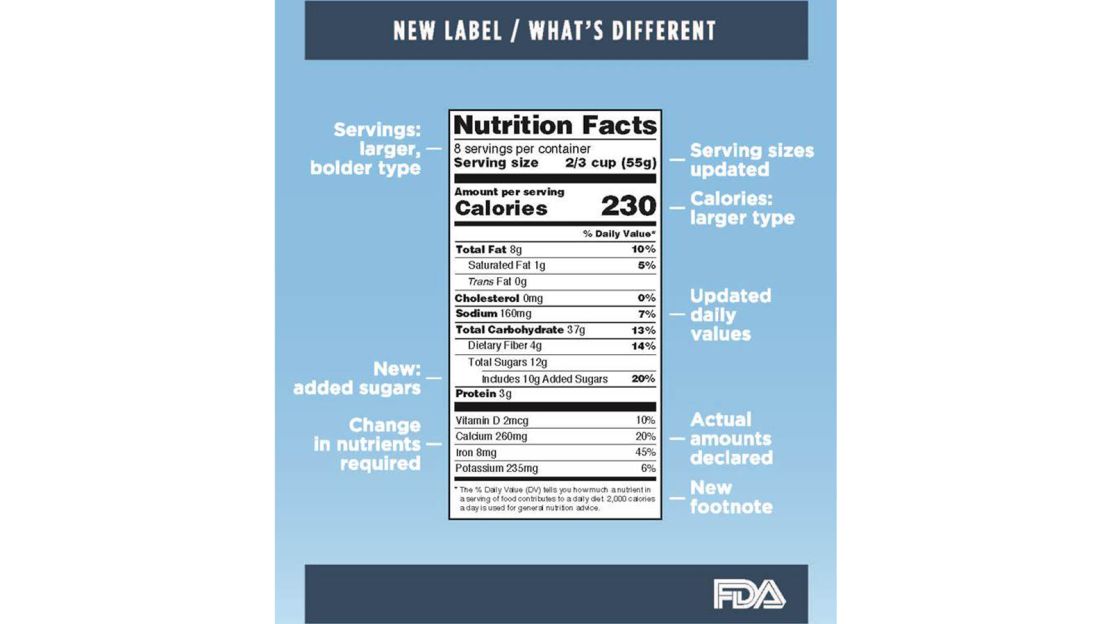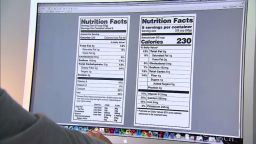Story highlights
Food labels will change to list added sugar, calories and better serving size information
Nutrition lists will now include potassium and Vitamin D but lose Vitamins A and C
Large manufacturers get two years to change their labels; smaller shops get three
The labels on the food you buy are going to look a lot different in the next two to three years, and the government hopes the change will help you make healthier decisions.
First lady Michelle Obama made the announcement about the FDA-approved revamp of the labels today. The new labels should make it easier for you to see how many calories you are eating, with a bolder font. Manufacturers will also have to list how much added sugar is in the food you are buying.
The labels should also make it clearer what a serving size is and will define “serving size” to fit better with the amount a person currently eats.
The nutrition labels haven’t changed significantly in two decades. Unlike dietary guidelines that must be re-examined every five years, there is no legal requirement to revisit the science behind these labels.

Nutrients will also get a makeover. The new labels will prioritize what Americans need more of, such as potassium and Vitamin D. Studies show that Americans don’t get enough of either in their diets. Products will also have to say how much calcium and iron are inside, but Vitamins C and A are out. That’s because deficiencies in those vitamins are now rare, according to the Food and Drug Administration.
Supplement labels will also be updated to reflect the changes.
Most food makers have two years to add the new labels to their products. Smaller manufacturers, those that have less than $10 million in sales, get an extra year to update their labels.
The majority of Americans do look at labels when they shop. According to government research, about 77% of U.S. adults say they do.
The FDA said the label change is a “major step.” With more than two-thirds of adults considered overweight or obese, the ease of access to nutrition information could help.
Join the conversation
“The updated label makes improvements to this valuable resource so consumers can make more informed food choices,” FDA Commissioner Dr. Robert Califf said in a statement today. Making better choices is “one of the most important steps a person can take to reduce the risk of heart disease and obesity.”










